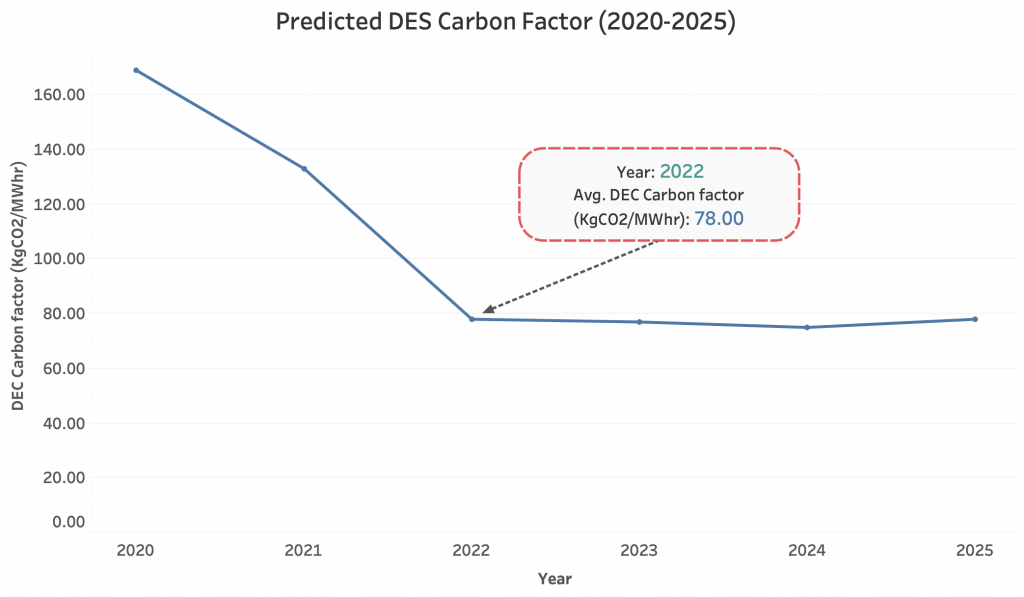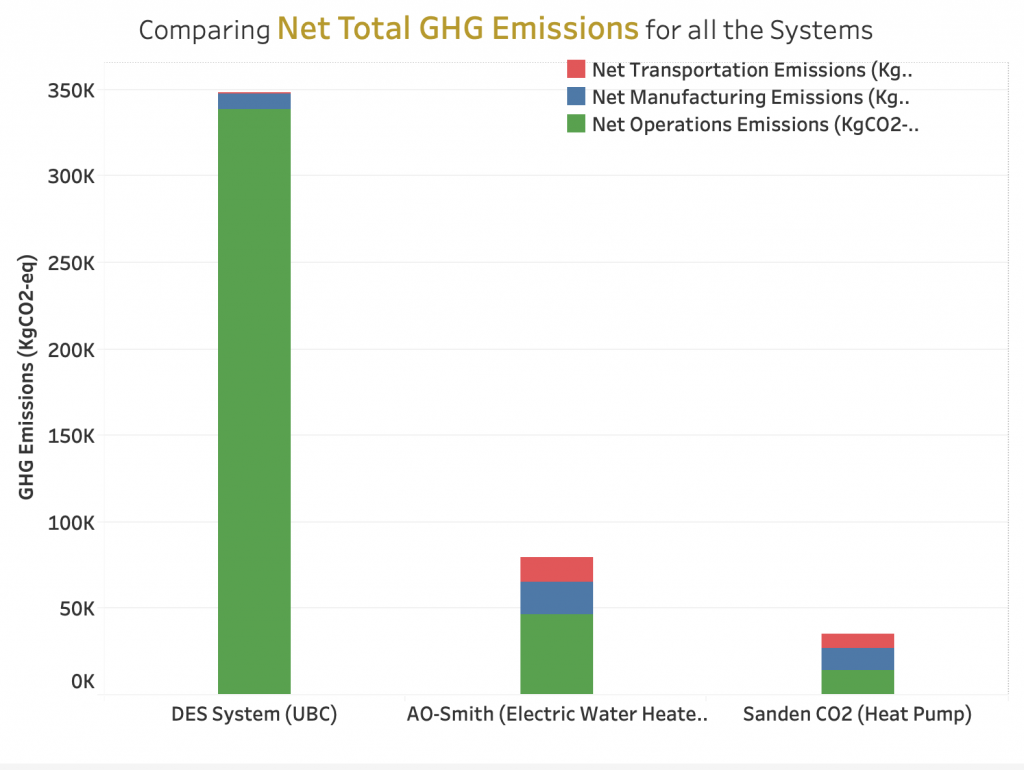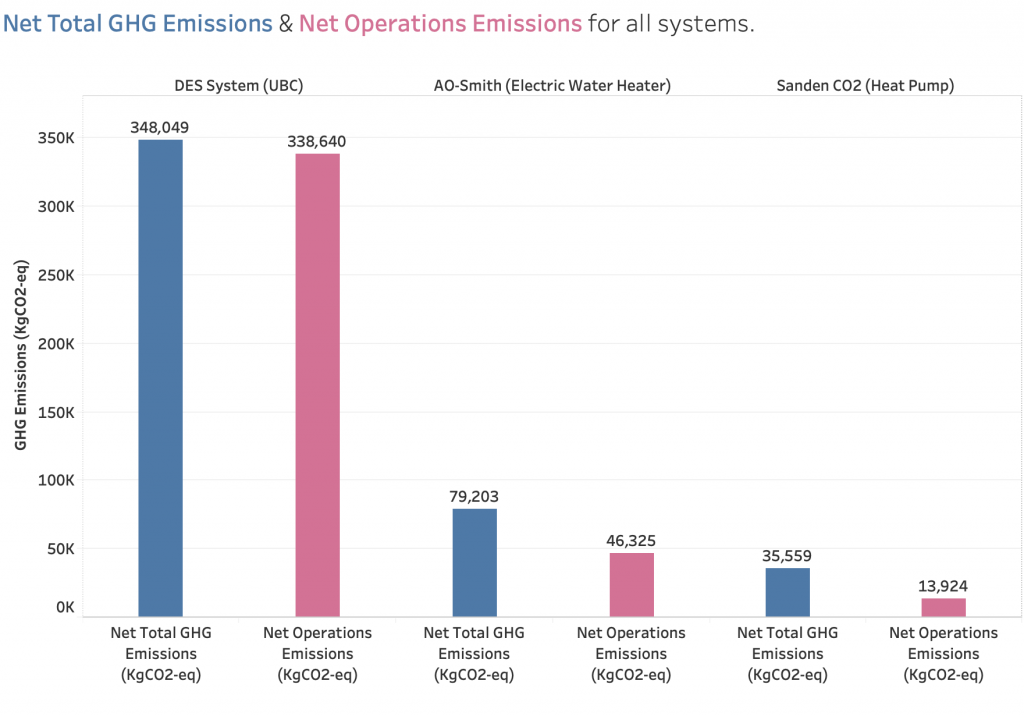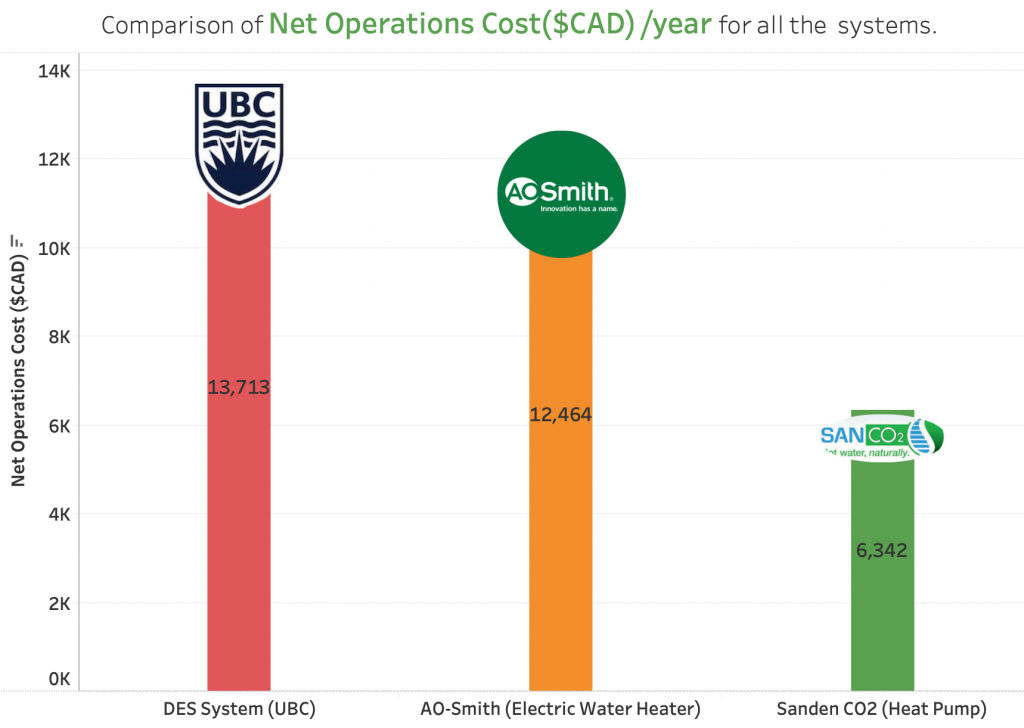Shikhar Kumar, MEL CEEN | December 17, 2020
APPP 506 – Master of Engineering Leadership Capstone Project, University of British Columbia
Abstract
This project supports the UBC Climate action plan which aims to be carbon neutral by 2050. The main aim of the project is to find an ideal hot water heating system with the least emissions from a new residential building at UBC. The comparison here is done on 3 systems, of which 2 systems uses electricity and the other one uses natural gas. On doing high level life cycle analysis of all the 3 systems, heat pump systems seems to have lower emissions when compared to other 2 systems. Operational emissions & operational cost of Natural Gas system is way higher and doesn’t seems viable option here. Only drawback of heat pump system is high initial set-up cost but it can be recovered over the life-time of the product.
Introduction
As a public institution, UBC is committed to ensuring that their operations are run responsibly and in compliance with provincial climate legislation. Under the provincial Greenhouse Gas Reduction Targets Act and the Carbon Neutral Government Regulation, UBC is required to be carbon neutral in its operations, as are all public sector organizations. In 2010, UBC became the first Canadian university to announce bold greenhouse gas reduction targets putting it on course to be net zero emissions byThe UBC Board of Governors adopted the Climate Action Plan and GHG reduction targets with a series of supportive actions and capital projects supported by sound business case analysis. This plan applies to the academic portion, core and ancillary of the Vancouver campus; a Community Energy and Emissions Plan (CEEP) was also developed for the University Neighbourhoods (i.e. residential & rental buildings) in 2013. In 2014 UBC created a 20-Year Sustainability Strategy in consultation with the campus community, including students, faculty, staff, campus residents, the University Neighbourhood Association (UNA), the Musqueam First Nation and external community partners. The vision expressed in this strategy reaffirmed UBC’s commitment to be a leader in sustainability generally, including climate action.
(Source: UBC Climate Action Plan)
Background
Approximately 88% of UBC’s operational GHG emissions come from burning natural gas to heating buildings and hot water requirement. UBC has pledged to reduce its GHG emission by 67% by 2020 & 100% by 2050 under its climate action plan. In order to achieve reductions and potentially meet the 100% reduction target, energy supply “heavy lift” projects will be required. This project is one of the parts of the UBC’s grand climate action plan. It is in collaboration with Athletics & Student housing at UBC Vancouver Campus. It focuses on “Technical, Carbon & Financial Analysis of ideal heating technology best suited for hot water requirement at UBC residential building”.
Project Objective
The main objective of this project is to find the ideal hot water heating system best suited for West Coast Suite at UBC based on lowest GHG emissions and operations cost calculated over an evaluation period of 30 years. Comparison here is with District Energy System at UBC, A.O Smith Electric Water Heater or SANDEN CO2 Heat Pump System.
Research Methods
Review of the Existing DES System at UBC.
Technical Analysis of Heat Pump System and its market size in Canada.
Comparison of Life Cycle Carbon Analysis of Sanden CO2 Heat Pump System w.r.t to DES System and A.O. Smith Electric Boiler. In order to calculate the Net Total GHG emissions , manufacturing emissions, operations emissions and transportation emissions were calculated and added up. Assumptions were made for material composition & recycling as currently not much detailed information are available on recycling of HVAC systems. For financial analysis, operations cost, initial set-up cost and rebate values are calculated.

The graph here shows the predicted emissions factor for DES system over the period of next 5 years. With the expansion plan for the DES system (starting 2021) the emission factor will reduce from 169 in 2020 to 78 by 2022. It is still much higher so initiative should be taken to decarbonize it.
Results

The stack graph here shows the Net Total GHG emissions from all the systems. Operations emissions from DES System is almost 24 times higher than SANDEN CO2 system. Manufacturing emissions for all the systems remains almost equal. transportation emission for DES system is taken 0 here.

Of the total GHG emissions, Operations emissions accounts for the most part.

The bar graph here shows comparison of operations cost for all the systems. Interestingly Net Operations cost of DES System is almost twice of the SANDEN CO2 system.
Discussion and Conclusions
After doing the analysis, SANDEN CO2 heat pump system seems the ideal solution for hot water at West Coast Suite.The amount of GHG emissions is much lower when compared to the natural gas DES system. Also the operating cost is half the cost of DES system. Even though the initial setup cost will be higher but it can be easily recovered over the lifetime of 13 years. the incentive from CleanBC will also help to curb the cost.
Contact

Email: sidk2683@gmail.com
LinkedIn: https://www.linkedin.com/in/skumar2345
References
Zheng, M., Fang, R., & Yu, Z. (2016). Life Cycle Assessment of Residential Heating Systems: A Comparison of Distributed and Centralized Systems. Energy Procedia, 104, 287-292. doi:10.1016/j.egypro.2016.12.049
Hong, B., & Howarth, R. W. (2016). Greenhouse gas emissions from domestic hot water: Heat pumps compared to most commonly used systems. Energy Science & Engineering, 4(2), 123-133. doi:10.1002/ese3.112
Piroozfar, P., Pomponi, F., & Farr, E. R. (2016). Life cycle assessment of domestic hot water systems: A comparative analysis. International Journal of Construction Management, 16(2), 109-125. doi:10.1080/15623599.2016.1146111
Raghavan, S. V., Wei, M., & Kammen, D. M. (2017). Scenarios to decarbonize residential water heating in California. Energy Policy, 109, 441-451. doi:10.1016/j.enpol.2017.07.002